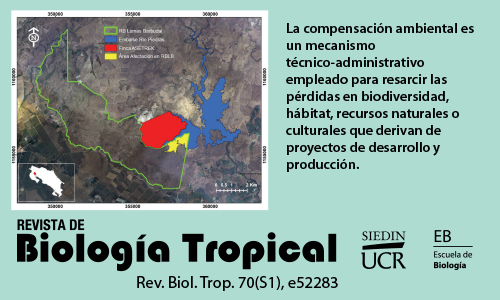Resumen
Introducción: La compensación ambiental es la alternativa final para enfrentar los impactos de proyectos de desarrollo que no pueden ser evitados, reducidos o mitigados. La compensación de hábitats pretende sustituir recursos ecológicamente equivalentes. El Método Hectárea de Hábitat se diseñó inicialmente para evaluar la equivalencia ecológica de vegetación nativa y emplea puntajes de indicadores relativos a un hábitat de referencia. La suma de estos puntajes mide la condición estructural del ambiente de manera relativa a la referencia, cuantificando el número de hectáreas necesarias para compensar la pérdida de un hábitat similar. Aunque el método no está exento de limitaciones, los valores se pueden estimar a partir de datos de campo recogidos sin ambigüedad, de forma reproducible, con menos sesgos que métodos más cualitativos. En este artículo, usamos una modificación del Método Hectárea de Hábitat para determinar el área equivalente necesaria para compensar la pérdida de hábitat en un área silvestre protegida en Costa Rica.
Metodología: Trabajamos en la Reserva Biológica Lomas de Barbudal, Pacífico norte de Costa Rica, un área silvestre protegida donde se inundarán cerca de 113 hectáreas para el Embalse de Río Piedras. En una propiedad previamente identificada como un sitio potencial de compensación, evaluamos indicadores de paisaje, suelo, estructura de la vegetación y servicios ecosistémicos; asignamos los puntajes en relación con el sitio a inundar.
Resultados: El puntaje de la condición ambiental en el sitio de compensación fue de 44,7% (±15,9%) del sitio inundado. En consecuencia, considerando la incertidumbre de nuestras mediciones, compensar la pérdida de cada hectárea requeriría entre 2.23 y 3.49 hectáreas de un ambiente similar.
Conclusión: Se necesitan entre 2.23 y 3.49 hectáreas de reemplazo, para compensar la pérdida de hábitat en el Embalse de Río Piedras.







